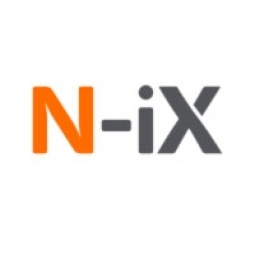技术
- 分析与建模 - 虚拟和增强现实(AR/VR)软件
- 可穿戴设备 - 虚拟现实(VR)眼镜/耳机/控制器
适用功能
- 产品研发
用例
- 虚拟现实
关于客户
N-iX 游戏开发人员创建 VR-iX 是为了展示他们在开发多人游戏和 VR 解决方案方面的专业知识。该游戏通过简单的控制和对多个 VR 平台的支持,以一种具有挑战性且有趣的方式将多人射击引入 VR。
挑战
我们面临的挑战是开发一款多人 VR 射击游戏,提供与虚拟对手的挑战性战斗,具有轻量级的游戏设计、控制器集成的自然游戏玩法以及多人游戏与游戏动态的平滑集成。
解决方案
N-iX 游戏开发人员使用 Unity 作为主要游戏引擎以及用于多人游戏功能的 Photon Engine 框架。他们创建了一款名为 VR-iX 的 VR 射击游戏,支持 HTC Vive、Oculus、PS VR 和 Gear VR 耳机。该游戏具有 PvE 和 PvP 模式、内置 AI 和引人入胜的游戏玩法。
运营影响

Case Study missing?
Start adding your own!
Register with your work email and create a new case study profile for your business.
相关案例.

Case Study
Implementing Robotic Surgery Training Simulator for Enhanced Surgical Proficiency
Fundacio Puigvert, a leading European medical center specializing in Urology, Nephrology, and Andrology, faced a significant challenge in training its surgical residents. The institution recognized the need for a more standardized and comprehensive training curriculum, particularly in the area of robotic surgery. The challenge was underscored by two independent studies showing that less than 5% of residents in Italian and German residency programs could perform major or complex procedures by the end of their residency. The institution sought to establish a virtual reality simulation lab that would include endourological, laparoscopic, and robotic platforms. However, they needed a simulator that could replicate both the hardware and software of the robotic Da Vinci console used in the operating room, without being connected to the actual physical console. They also required a system that could provide both basic and advanced simulation training, and a metrics system to assess the proficiency of the trainees before they performed surgical procedures in the operating theater.
Case Study
Stellaris Game Art Production: A Case Study of N-iX and Paradox Interactive Collaboration
Paradox Interactive, the creator of the grand strategy video game Stellaris, needed to release regular updates and downloadable content (DLC) for its games. The challenge was to create appealing game art assets within tight deadlines. The team had to follow distinctive art production guidelines provided by the client, which described a unique art creation pipeline. Another challenge was understanding the multiple races and their specific designs in Stellaris, a game with numerous galaxies and races with different styles and features. The team had to study the game carefully to produce art that matched the game style and ensure smooth project implementation. Additionally, the team faced the challenge of meeting tight deadlines at certain stages of the project, where they had to deliver all the assets in time for the DLC release.
Case Study
VR Solution Development for Training Simulation in American Football
SportsVTS, a US-based company that creates simulated reality training experiences, aimed to develop a VR solution that would enable players to minimize the injury risk and maximize their performance by training in virtual reality. The primary business goal was to create a realistic training simulation to enable a quarterback to master various techniques within a controlled environment and improve his playing ability without the risk of injury. The challenges included developing an AI component to maximize user experience realism, using full-body 3D scan for highly-detailed and hyper-realistic character models, applying corrective BlendShapes for recreating the player’s skeleton and body, using Locomotion Extend System to allow the player to access any part of the field smoothly, developing the character customization system based on real NFL players, tracing the ball trajectory to re-create it with maximum accuracy, integrating the experience with VR hardware, and developing functionality for setting 21 other players on the field.
Case Study
Enhancing Liberal Arts Education with IBM Cloud Technologies: A Case Study of Hong Kong Shue Yan University
Hong Kong Shue Yan University (HKSYU), a liberal arts school, was faced with the challenge of teaching non-technical students how to use advanced technology to enhance their studies. In September 2020, the university launched three laboratories for the study of big data, virtual reality, and robotics with the aim of reinventing liberal arts education and staying relevant in the digital age. The Big Data Laboratory was designed to facilitate studies and support research projects requiring data analytics, machine learning, and data visualization. However, the challenge was to equip the lab with technology that both students and faculty could easily learn and use. The students and faculty members were interested in using technology to support their studies and research but found it complicated to start with.
Case Study
Leveraging Xenko Game Engine for Immersive VR Experiences: A StarBreach Case Study
Silicon Studio, the developer of the open-source cross-platform game engine Xenko, was looking to showcase the impressive graphical capabilities of their product. They aimed to demonstrate the engine's compatibility with VR and its ability to deliver high-quality virtual reality experiences and games. To achieve this, they needed to create a demo game, StarBreach, that would effectively highlight these features. However, they required an experienced art production team that could create high-quality game art for StarBreach. The challenge was not only to create visually appealing assets but also to demonstrate the technological possibilities of the Xenko game engine.
Case Study
Business-VR: A Mobile Virtual B2B Multi-User Platform by MindArk
MindArk's client required a unique platform that would allow professionals to host meetings in Virtual Reality (VR) instead of using traditional telephone or video conference. The platform needed to support multiple users, up to 100, from different locations, and provide a realistic representation of the users through customizable avatars. The platform also needed to support different VR devices including Oculus, HTC Vive, Google Daydream, Samsung Gear VR, and traditional devices like iOS, Android, Windows, and OS X. Additionally, the platform needed to integrate with Google Account and Google Drive to operate with materials stored on the Drive such as PPT, Video, etc. The challenge also included creating a 3D positional / Voice proximity so users could see and hear surrounding objects/users as realistically as possible, and tracking the user’s hands and speech and synchronize it with the avatar’s lips and body language.



